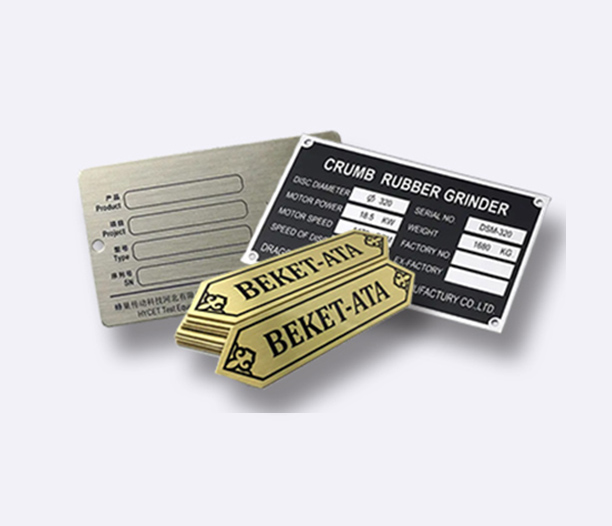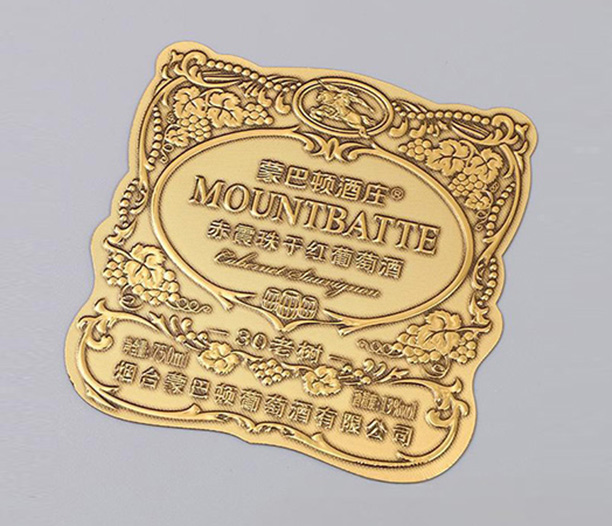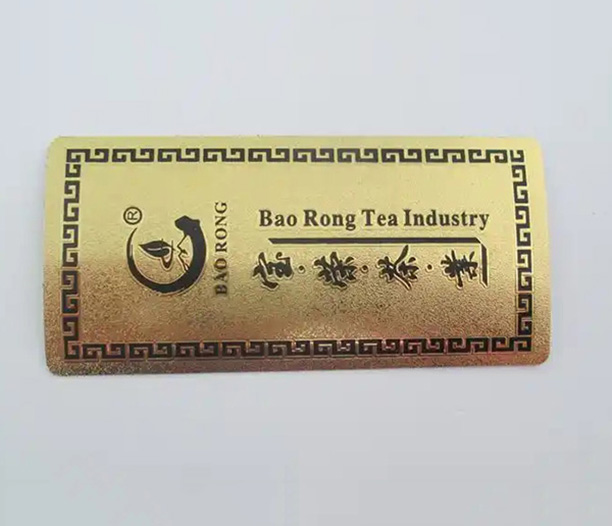In today's fast-paced world, where branding, security, and personalization are paramount, metal engraved name plates stand out as timeless tools for identification and decoration. These plates are not just simple tags; they are crafted with precision to offer longevity, professionalism, and aesthetic appeal. Whether used in corporate settings, industrial environments, or personal spaces, metal engraved name plates provide a permanent solution that withstands the test of time. This article delves into the various facets of metal engraved name plates, highlighting their importance, applications, materials, production processes, and benefits. By understanding these aspects, you can make informed decisions for your specific needs, ensuring that your identification markers are both functional and stylish.
Metal engraved name plates have been a staple in various industries for decades, evolving from basic markings to sophisticated designs. The engraving process involves etching text, logos, or patterns onto metal surfaces, creating a durable and legible finish. This method ensures that the information remains intact even under harsh conditions, making metal engraved name plates ideal for both indoor and outdoor use. As we explore the different dimensions of these plates, you'll discover why they are a preferred choice for many professionals and individuals seeking reliable identification solutions.
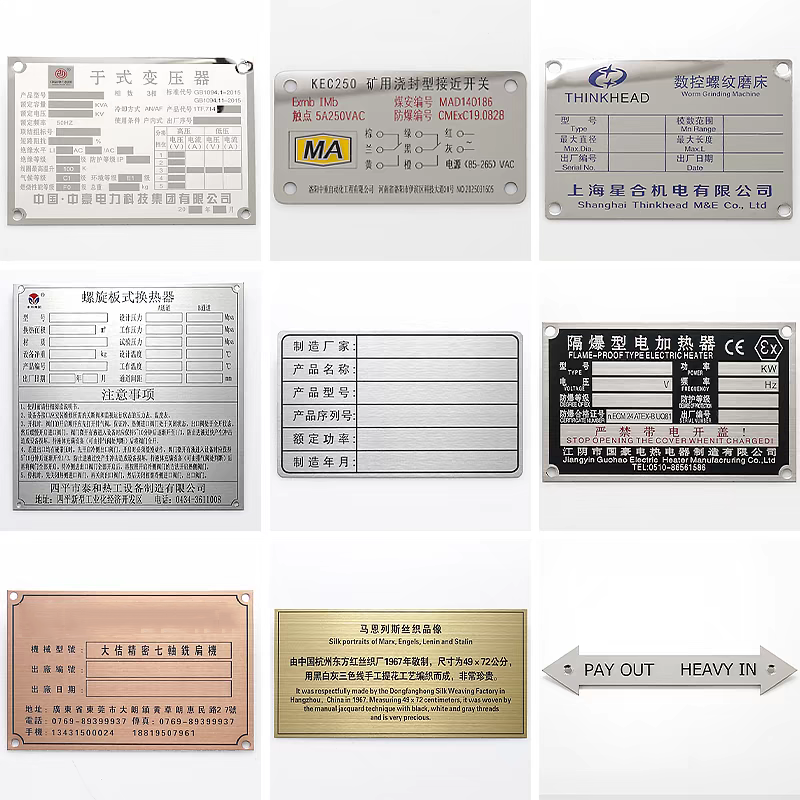
What Are Metal Engraved Name Plates?
Metal engraved name plates are specialized plates made from various metals, such as stainless steel, brass, or aluminum, that have been engraved with text, numbers, or designs. The engraving process involves removing material from the metal surface to create raised or recessed characters, resulting in a permanent mark. These plates are commonly used for labeling, branding, and identification purposes. The durability of metal engraved name plates makes them resistant to wear, corrosion, and fading, ensuring that the information remains visible for years. They are often customized to include names, logos, serial numbers, or other details, providing a professional and polished look.
The history of metal engraved name plates dates back to ancient times when metals were used for seals and markers. Today, advancements in technology have refined the process, allowing for intricate designs and high precision. Metal engraved name plates are not limited to industrial use; they can be found in offices, homes, and public spaces, serving as nameplates for doors, equipment labels, or commemorative plaques. The versatility of metal engraved name plates lies in their ability to blend functionality with aesthetics, making them a popular choice across various sectors.
Applications and Uses of Metal Engraved Name Plates
Metal engraved name plates are incredibly versatile and find applications in numerous fields. In corporate environments, they are used for office nameplates, desk tags, and directory signs, enhancing professionalism and wayfinding. Companies often use metal engraved name plates to display employee names, job titles, and company logos, creating a cohesive brand image. In industrial settings, these plates serve as asset tags, machine labels, and safety signs, providing crucial information that withstands harsh conditions like high temperatures, moisture, and chemicals.
Beyond the workplace, metal engraved name plates are popular in residential and personal contexts. Homeowners use them for address plaques, mailbox labels, and decorative items, adding a touch of elegance to their properties. In the automotive and aerospace industries, metal engraved name plates are essential for part identification, serial numbers, and compliance labeling, ensuring traceability and safety. Additionally, they are used in memorials, awards, and gifts, where their durability and timeless appeal make them cherished items. The widespread use of metal engraved name plates underscores their importance in both functional and symbolic roles.
Materials Used in Metal Engraved Name Plates
The choice of material plays a crucial role in the performance and appearance of metal engraved name plates. Common materials include stainless steel, brass, aluminum, and bronze, each offering unique properties. Stainless steel is highly durable, corrosion-resistant, and suitable for outdoor use, making it a top choice for industrial and marine applications. Brass, known for its classic gold-like appearance, is often used for decorative purposes and in environments where aesthetics are key. It develops a patina over time, adding to its vintage charm.
Aluminum is lightweight, cost-effective, and resistant to rust, ideal for indoor applications like office nameplates and equipment labels. Bronze, with its rich brown hue, is favored for historical plaques and memorials due to its traditional look and longevity. The selection of material depends on factors such as the environment, budget, and desired finish. For instance, metal engraved name plates intended for high-traffic areas might benefit from stainless steel's robustness, while those for decorative purposes could use brass or bronze. Understanding these material options helps in choosing the right metal engraved name plates for specific needs.
The Engraving Process: How Metal Name Plates Are Made
The production of metal engraved name plates involves several techniques, each tailored to achieve precision and durability. Traditional methods include mechanical engraving, where a cutting tool physically removes metal to create grooves. This method is effective for deep, tactile engravings but may be slower for complex designs. Modern advancements have introduced laser engraving, which uses a high-powered laser beam to etch the surface without physical contact. Laser engraving offers high accuracy, speed, and the ability to produce intricate patterns, making it popular for custom metal engraved name plates.
Another technique is chemical etching, where a corrosive substance is used to dissolve parts of the metal surface, leaving behind the desired design. This method is suitable for fine details and mass production. After engraving, metal engraved name plates often undergo finishing processes such as polishing, painting, or coating to enhance their appearance and protect against environmental factors. For example, a clear coat can prevent tarnishing on brass plates, while powder coating adds color and durability. The engraving process ensures that metal engraved name plates are not only functional but also visually appealing, meeting the highest standards of quality.
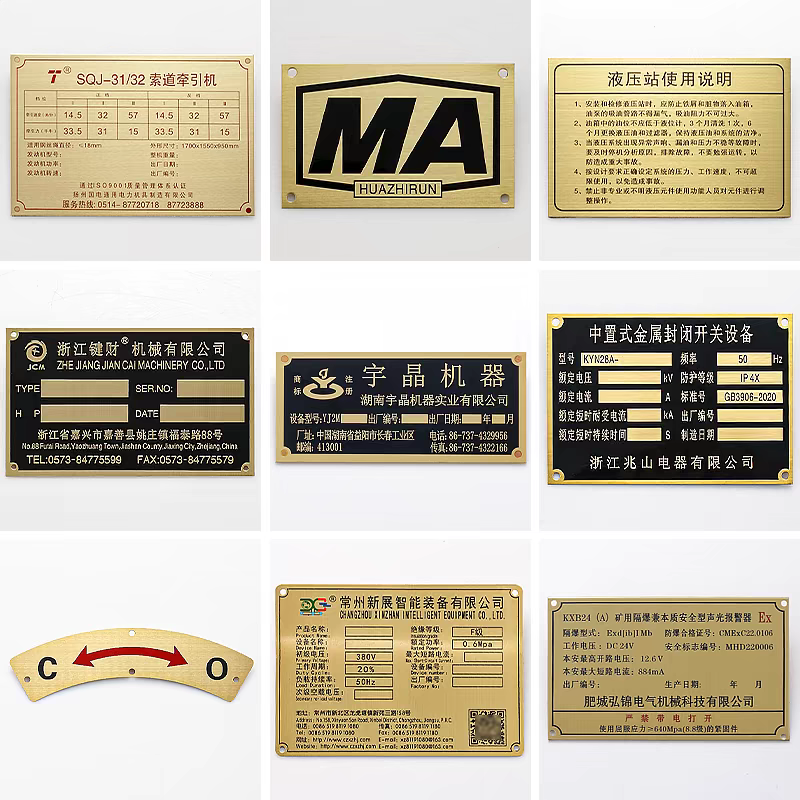
Benefits of Choosing Metal Engraved Name Plates
Opting for metal engraved name plates comes with numerous advantages that make them a superior choice for identification needs. Firstly, their durability is unmatched; they resist abrasion, UV rays, and extreme weather, ensuring longevity in both indoor and outdoor settings. This makes metal engraved name plates cost-effective in the long run, as they rarely need replacement. Secondly, they offer a professional appearance that elevates the perceived value of a space or product. The engraved text is sharp and legible, providing clear communication that enhances safety and organization.
Another benefit is the customization potential. Metal engraved name plates can be tailored in terms of size, shape, font, and finish, allowing for unique designs that reflect personal or corporate identity. They are also environmentally friendly, as metals are recyclable and the engraving process often minimizes waste. Additionally, metal engraved name plates require minimal maintenance—a simple wipe with a damp cloth is usually sufficient to keep them looking new. These benefits collectively make metal engraved name plates a reliable and attractive option for various applications.
Customization Options for Metal Engraved Name Plates
Customization is a key feature of metal engraved name plates, enabling them to meet diverse requirements. Customers can choose from a wide range of fonts, sizes, and layouts to match their branding or personal style. Logos, graphics, and symbols can be incorporated into the design, adding a unique touch to metal engraved name plates. The choice of metal and finish—such as brushed, polished, or matte—further enhances customization, allowing for a tailored look that complements the surrounding environment.
Color options are also available through processes like anodizing or enamel filling, which add vibrancy to the engraved areas. For instance, black-filled engravings on stainless steel create a striking contrast that improves readability. Some manufacturers offer 3D engraving, where the design is raised for a tactile effect, adding depth and elegance. Whether for a corporate boardroom or a residential address, custom metal engraved name plates can be designed to exact specifications, ensuring they align with the intended purpose and aesthetic. This flexibility makes metal engraved name plates a versatile solution for any scenario.
Maintenance and Care for Metal Engraved Name Plates
Despite their durability, metal engraved name plates benefit from proper maintenance to preserve their appearance and functionality. Regular cleaning with a soft cloth and mild soapy water can remove dust, dirt, and fingerprints without damaging the surface. Avoid abrasive cleaners or harsh chemicals, as they can scratch or corrode the metal. For outdoor metal engraved name plates, periodic inspections for signs of wear or corrosion are recommended, and applying a protective coating can extend their lifespan.
In corrosive environments, such as coastal areas, choosing corrosion-resistant metals like stainless steel or aluminum is advisable. If tarnishing occurs on brass or bronze plates, specialized metal polishes can restore their shine. Storage conditions also matter; when not in use, metal engraved name plates should be kept in a dry place to prevent moisture damage. By following these simple care tips, you can ensure that your metal engraved name plates remain in pristine condition for years, continuing to serve their purpose effectively.
In conclusion, metal engraved name plates are indispensable tools that combine durability, aesthetics, and functionality. From corporate branding to personal mementos, they offer a reliable means of identification that stands the test of time. By considering factors like materials, engraving techniques, and customization, you can select the perfect metal engraved name plates for your needs. Their numerous benefits and low maintenance requirements make them a smart investment for anyone seeking long-lasting and professional identification solutions.
Frequently Asked Questions About Metal Engraved Name Plates
Q1: What are the most common materials used for metal engraved name plates?
A1: The most common materials for metal engraved name plates include stainless steel, brass, aluminum, and bronze. Stainless steel is prized for its durability and corrosion resistance, making it ideal for harsh environments. Brass offers a classic, elegant look often used in decorative applications. Aluminum is lightweight and cost-effective, suitable for indoor use, while bronze is favored for its traditional appeal in memorials and plaques.
Q2: How long do metal engraved name plates typically last?
A2: Metal engraved name plates can last for decades, depending on the material and environment. For instance, stainless steel and aluminum plates in outdoor settings may endure 20 years or more with minimal maintenance, while brass and bronze can develop a protective patina that enhances their longevity. Proper care and placement can further extend their lifespan.
Q3: Can metal engraved name plates be used outdoors?
A3: Yes, metal engraved name plates are highly suitable for outdoor use. Materials like stainless steel, aluminum, and bronze are resistant to weather elements, UV rays, and corrosion. Additionally, protective coatings can be applied to enhance durability, making them perfect for address plaques, industrial signs, and outdoor memorials.
Q4: What is the difference between laser engraving and mechanical engraving for metal name plates?
A4: Laser engraving uses a laser beam to etch designs without physical contact, offering high precision, speed, and the ability to create intricate details. Mechanical engraving involves a cutting tool that physically removes metal, resulting in deep, tactile grooves but may be slower for complex patterns. Laser engraving is often preferred for custom designs, while mechanical engraving is valued for its traditional feel.
Q5: Are metal engraved name plates customizable in terms of design and size?
A5: Absolutely, metal engraved name plates are highly customizable. Customers can choose from various sizes, shapes, fonts, and finishes. Logos, graphics, and text can be tailored to specific requirements, and options like color filling or 3D effects are available. This flexibility allows metal engraved name plates to meet unique branding or personalization needs.



